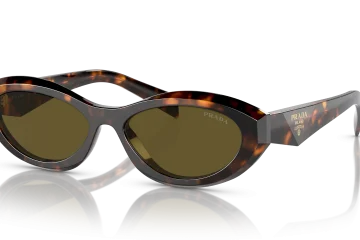Introduction to Permanent Hair Straightening
Permanent hair straightening is a process that chemically alters the structure of curly or wavy hair to make it straight, smooth, and frizz-free. Unlike temporary straightening methods like blow drying or flat ironing, permanent straightening can keep hair straight for months at a time, even after washing.
The most popular permanent straightening treatments use powerful chemicals to break and reform the hair bonds. The chemicals penetrate deep into the hair shaft to permanently rearrange the bonds and take out the curl pattern. Once the bonds have been straightened, the hair will grow out with the new straightened texture.
Pros of permanent hair straightening:
- Long-lasting results that can last 3-6 months or longer
- Significantly cuts down styling time and effort
- Allows you to permanently eliminate frizz and unmanageable curls
- Wide variety of treatment options for different hair types
- Can repair damage from overstyling and frequent heat tools
Cons of permanent hair straightening:
- Harsh chemicals can damage hair if not done properly
- Results require repeated touch-up treatments every few months
- Can cause dryness, breakage, and thinning over time
- Makes it harder to revert back to natural curls later
- Expensive compared to temporary straightening methods
The main advantage of permanent straightening is the extended longevity and minimal daily styling needed after the treatment. However, the powerful chemicals pose a risk of significant damage if not applied correctly. Permanent straightening is a major commitment and alters the hair permanently, so it’s not recommended for those who may want to go back to curly hair later on.
Types of Permanent Straightening Treatments
There are several different types of permanent hair straightening treatments to choose from:
- Keratin Treatment
Keratin treatment is a popular chemical straightening method that works by infusing keratin protein deep into the hair cuticle. The keratin bonds to the hair strands, making them smoother, straighter, and less frizzy. Formaldehyde-free keratin treatments are available for safety. The treatment takes 2-3 hours and lasts 2-5 months. Keratin treatment helps tame frizz and curls without completely removing natural texture. It’s suitable for most hair types.
- Japanese Hair Straightening
Also called thermal reconditioning, Japanese hair straightening permanently straightens hair by restructuring the inner hair bonds. It uses a special heat-resistant chemical along with flat irons to straighten hair and give it a sleek, smooth look. The treatment takes several hours and lasts 6-12 months. It can completely straighten even very curly hair. Japanese hair straightening is aggressive so hair must be in good condition.
- Brazilian Blowout
Brazilian blowout is a salon treatment that smooths and softens curls. It contains a keratin solution that’s applied to damp hair before blow drying and flat ironing. It reduces frizz and lasts 2-3 months. Formaldehyde-free options are available. Brazilian blowouts add shine and gradually relax curls over a few treatments. It’s suitable for all hair types and causes minimal damage compared to Japanese straightening.
- Chemical Relaxers
Hair relaxers use strong alkaline chemicals like lye to break the bonds in curly hair. This permanently straightens the hair. The treatment takes 30-90 minutes. Touch-ups are needed as new growth appears. Relaxers allow very tight curls to be straightened but they can damage hair. They’re often used by people with African-American hair texture. Caution must be taken to avoid burns and hair loss.
How Permanent Hair Straightening Works
Permanent hair straightening treatments work by breaking the bonds in the hair strands to completely straighten the hair from root to tip. Most permanent straightening methods rely on the use of harsh chemicals or very high heat to alter the structure of the hair. The specific process varies depending on the type of treatment:
- Keratin treatments use a formaldehyde-based solution that penetrates the hair cuticle and rearranges the cystine bonds in the strands. The solution is sealed into the hair using a flat iron heated to 400°F or higher.
- Japanese straightening uses a two-step process with a special liquid coating containing cysteine and then a neutralizer. It breaks the bonds in the hair and restructures them while using high heat from flat irons.
- Chemical relaxers break the hair’s bonds with caustic chemicals like lye or ammonium thioglycolate. The hair is then straightened with a blow dryer and flat iron.
- Rebonding treatments use chemicals and proteins applied section-by-section, then sealed in with hot tools to permanently straighten the hair.
The use of such strong chemicals and high heat levels is concerning, but proponents argue it is the only way to permanently transform tightly curled or coiled hair into stick-straight locks. Still, caution is warranted with these harsh straightening methods to avoid damage.
Maintenance and Aftercare
Once you get a permanent hair straightening treatment, it’s crucial to take proper care of your hair afterwards to maintain the results. Here are some key tips:
- Avoid heat styling tools like blowdryers, flat irons, and curling irons as much as possible, as excessive heat can cause damage to chemically treated hair. Limit heat styling to 1-2 times per week maximum.
- Use specialized shampoos and conditioners designed for chemically straightened hair, as these will help keep your hair smooth without reverting the straightening. Avoid harsh shampoos with sulfates.
- Condition hair regularly with a moisturizing mask or deep conditioner to keep hair healthy and prevent dryness. Focus conditioner on the ends.
- Use leave-in treatments with keratin or other smoothing ingredients to boost straightness between washes.
- Protect hair from sun exposure and chlorine or salt water to maintain straightness. Rinse hair after swimming.
- Schedule touch-up appointments with your stylist every 2-4 months to keep new growth looking sleek. Your stylist may recommend using an at-home root relaxer between salon visits.
- Get occasional trims to remove split ends and keep hair looking healthy. Let your stylist assess how much to trim.
- Handle hair gently and use soft brushes and combs to avoid breakage. Sleep on a satin pillowcase.
Proper aftercare is crucial for maintaining permanently straightened hair and preventing reversion back to curly or wavy textures. Work closely with your stylist to find the right products and routine.
Seeking Professional Guidance
When considering permanent hair straightening, it’s highly recommended to consult with a professional stylist first. The consultation is a critical part of the process for several reasons:
- Assessing Hair Health and Condition: A knowledgeable stylist will examine the current condition of your hair and scalp to determine if permanent straightening is advisable. They can identify any damage, dryness, or other issues that may impact results or cause complications. The stylist may recommend treatments to improve hair health before proceeding.
- Setting Realistic Expectations: Every head of hair is unique. Your stylist will evaluate your hair texture, curl pattern, thickness, and growth cycles. They can provide realistic expectations for the results you can achieve. This prevents disappointments from unrealistic goals.
- Determining the Best Method: With an understanding of your hair properties and desired outcome, the stylist can recommend the most suitable permanent straightening method. Japanese straightening, keratin treatment, relaxers etc. all have pros and cons that make them better for different hair types and lifestyles.
- Advising Proper Aftercare: To maintain the results safely, you need to care for straightened hair properly. An experienced professional provides guidance on recommended products, heat tools, and styling techniques that will keep your hair healthy.
- Finding an Experienced Stylist: Permanent hair straightening involves powerful chemicals. In inexperienced hands, it can damage hair severely. Research stylists thoroughly. Look for advanced training, years of experience, and client reviews praising their work. Don’t compromise on skill to save money.
The initial consultation equips you with knowledge to decide if permanent straightening is right for you. It sets you up for success by aligning methods and expectations. With an expert stylist, you can straighten your hair beautifully and safely.




